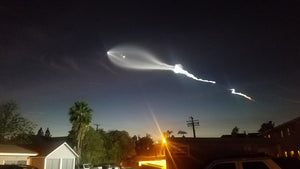June-Deep Sky Objects, M4, M5, M102
M5
Locating the globular cluster M5 can indeed be a rewarding challenge for beginners. Here’s a step-by-step guide to help you find it using the stars Unukalhai, 10 Serpentis, and 5 Serpentis as your guides:
-
Find Unukalhai (Alpha Serpentis): This star is the brightest in the constellation Serpens and has an apparent magnitude of 2.63. It's fairly easy to spot in the night sky. Unukalhai is located near the head of Serpens Caput, the western part of the constellation Serpens.
-
Locate 10 Serpentis: From Unukalhai, move about six degrees to the southwest. 10 Serpentis is a magnitude 5 star, so it should be visible to the naked eye under dark skies or easily through binoculars.
-
Find 5 Serpentis: From 10 Serpentis, move a little more than two degrees due west. 5 Serpentis is slightly dimmer but still visible at magnitude 5.6.
-
Spot M5: M5 is located about 20 arcminutes to the northwest of 5 Serpentis. This means it is very close to 5 Serpentis, and they should both fit within the same low-powered field of view in your binoculars or telescope.
Observing M5
-
With Binoculars: M5 will appear as a tiny, misty patch. It will look distinctly non-stellar, even if you can’t resolve individual stars.
-
With a Telescope: At low magnifications, M5 will appear slightly oval with a small, bright core. The halo surrounding the core is about twice as large as the core itself.
-
Higher Magnifications: Using around 80x magnification, you should start to resolve individual stars within the cluster. Larger telescopes and higher magnifications will reveal intricate chains of stars within M5, making the view even more spectacular.
M102 - Spindle Galaxy
Located four degrees south of Iota Draconis, the Spindle Galaxy (M102) is visible through a small telescope as a faint streak of light that gradually brightens toward the core. Its elongated shape is noticeable even with modest equipment, providing a glimpse of its central concentration of stars.
However, to see the intricate details, like the dust lane running through it, you'll need a large telescope and dark skies. Under these optimal conditions, the dust lane becomes visible, adding depth and complexity to the galaxy's appearance. This feature, which runs along the length of the galaxy, provides a subtle contrast against the brighter core and diffuse halo.
M4
Another remarkable globular cluster, M4, is easily found nestled between Antares and Al Niyat in the constellation Scorpius. This cluster is bright enough to be detected with binoculars, making it accessible for casual stargazing, but it truly shines when viewed through a telescope.
One particularly notable feature of M4 is the distinctive bar of stars that runs through its center, setting it apart from other globular clusters. This bar is clearly visible in telescopic views and adds an intriguing structural element to the cluster’s dense, spherical collection of stars. Observing M4 provides a captivating look at one of the nearest globular clusters to Earth, offering both beginners and experienced astronomers a fine celestial sight.







